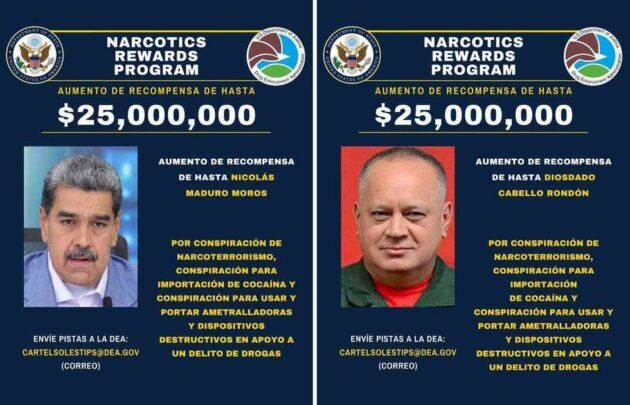Phase one: destroy the facilities of the Cartel de los Soles, the organization that the United States believes is led by senior military officials of the Venezuelan regime and by President Maduro himself. This activity, according to the American media Wall Street Journal and Miami Herald, is"imminent." The Florida newspaper writes: "The Trump administration has decided to attack military installations inside Venezuela, and the attacks could occur at any time." Sources contacted by the Herald indicate that the targets could be struck by air within a few days or even hours.
The tug-of-war between Washington and Caracas has been going on for weeks now. The Americans believe that the Cartel de los Soles exports around 500 tons of cocaine a year between Europe and the United States. Maduro's supporters accuse the US apparatus of having constructed a convenient narrative to oust the Chavista president because the drug cartel attributed to him does not exist. BBC Mundo interviewed several experts. According to Raúl Benítez-Manaut, an expert in national security and organized crime at UNAM (National Autonomous University of Mexico), the Cartel de los Soles originated in the late 1980s and early 1990s as an alternative to the transportation of Colombian cocaine, during the dismantling of the Medellín cartel. The first time the Colombian press covered the Cartel de los Soles was to report the arrest of General Ramón Guillén Dávila, head of the Venezuelan National Guard's counternarcotics unit, and his successor, Orlando Hernández Villegas. Guillén was accused of smuggling up to 22 tons of cocaine into the United States while he headed the counternarcotics unit between 1987 and 1991.
Washington believes this organization is more alive than ever and is determined to take down Maduro, so much so that a source told the Miami Herald that Maduro's hours are numbered and that more than one general in his command is ready to hand him over. Also titillating senior officials in Caracas is the reward announced last August. The Department of Justice (DOJ) has doubled the amount for information leading to Maduro's arrest, bringing it to $50 million – the highest ever offered – and to $25 million for the capture of government officials such as Interior Minister Diosdado Cabello and Defense Minister Vladimir Padrino López.

But is the United States ready for an immediate strike? If you look at the numbers, the answer is yes. The White House has deployed three destroyers off the coast of Venezuela – equipped for air, anti-submarine, and missile defense – and a landing group numbering 4,500 troops; P-8 reconnaissance aircraft; and long-range surveillance flights to map drug trafficking routes. Since September, this force has been joined by ten F-35B fighters, along with armed MQ-9 Reaper drones, based in Puerto Rico. Finally, in early October, the aircraft carrier USS Gerald R. Ford moved forward with its strike group: the cruiser USS Normandy and the destroyers USS Thomas Hudner, USS Ramage, USS Carney, and USS Roosevelt. The naval formation can count on 4,000 personnel and approximately 90 combat aircraft.
However, this deployment of forces suggests a targeted action rather than a ground mission. In 1989, the mission in Panama required the deployment of approximately 30,000 soldiers. And it is well known that President Trump
prefers short raids rather than long-term wars. The UN has expressed a negative opinion on possible military raids. The commissioner of the UN agency for human rights, Volker Türk, has called for an investigation and maintains that forceful actions against vessels in the Caribbean Sea and the Pacific are"unacceptable."
